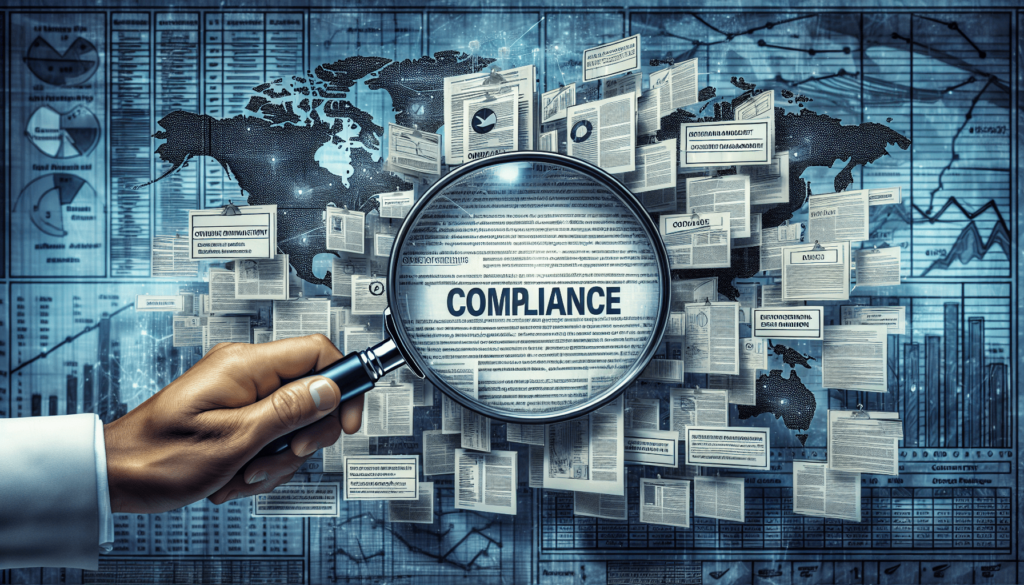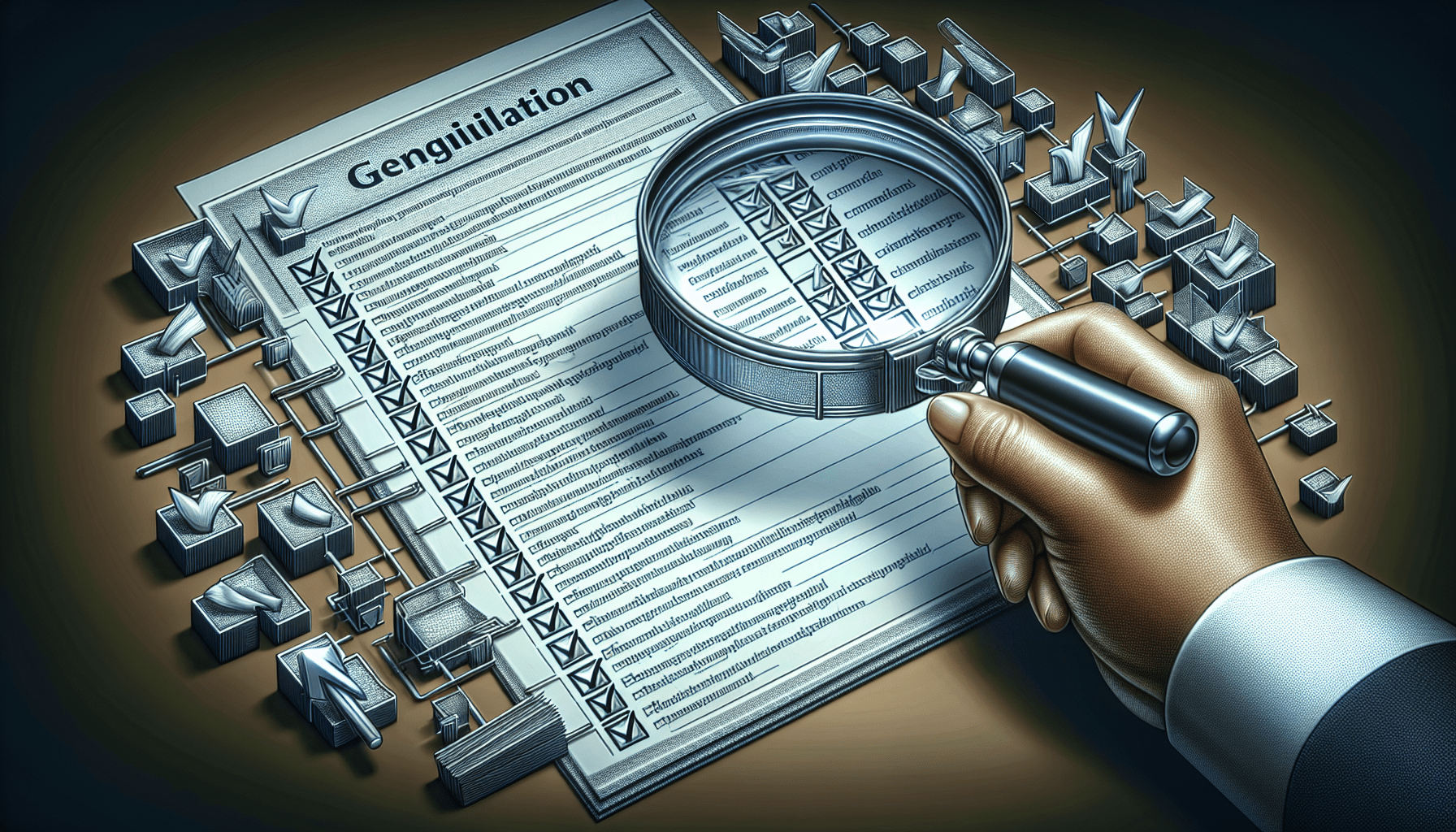Compliance audits play a crucial role in ensuring organizations adhere to legal and regulatory requirements, minimizing the risk of non-compliance. These audits act as a systematic review of processes, policies, and procedures, assessing their effectiveness in mitigating organizational risks. By identifying vulnerabilities and gaps in compliance measures, audits allow businesses to proactively address potential risks and implement robust risk management strategies. In this article, we will explore the significant impact compliance audits have on risk management and how organizations can effectively utilize them to safeguard their operations.

Definition of Compliance Audits
Compliance audits are a systematic and independent examination of an organization’s policies, procedures, practices, and records to ensure adherence to legal, regulatory, and internal requirements. These audits are conducted by professional auditors who assess the organization’s level of compliance and identify any gaps or areas of non-compliance. Compliance audits provide assurance to stakeholders, including management, investors, regulators, and customers, that the organization is operating in accordance with applicable laws and regulations.
Compliance Audit Process
The compliance audit process typically involves several stages. It begins with planning, where the audit team establishes the objectives, scope, and timeframe for the audit. Next, the auditors gather information and evidence through interviews, document reviews, and data analysis. They then evaluate the gathered information against the relevant compliance requirements and identify any areas of non-compliance. Finally, the audit team prepares a report summarizing their findings and recommendations for improvement.
Purpose of Compliance Audits
The primary purpose of compliance audits is to assess and ensure that an organization is meeting its legal, regulatory, and internal obligations. These audits provide an objective evaluation of the organization’s compliance framework, policies, and practices, thereby reducing the risk of non-compliance. Compliance audits also help organizations identify areas where they may need to implement additional controls or processes to mitigate compliance risks. Moreover, compliance audits promote transparency, accountability, and trust among stakeholders by demonstrating the organization’s commitment to complying with applicable laws and regulations.
Types of Compliance Audits
There are various types of compliance audits that organizations can undertake based on their specific needs and requirements. Some common types include financial compliance audits, operational compliance audits, IT compliance audits, and regulatory compliance audits. Financial compliance audits focus on ensuring accuracy, completeness, and fairness in financial statements and related disclosures. Operational compliance audits assess the organization’s adherence to operational policies and procedures. IT compliance audits evaluate the organization’s adherence to information security and privacy requirements. Regulatory compliance audits examine the organization’s compliance with specific industry regulations.
Significance of Risk Management
Risk management refers to the process of identifying, assessing, and mitigating risks that could affect an organization’s ability to achieve its objectives. Effective risk management is essential for organizations to proactively identify potential threats and opportunities and take appropriate actions to manage them. By managing risks, organizations can enhance their ability to navigate uncertainties and achieve sustainable growth. Risk management enables organizations to make informed decisions, allocate resources effectively, and respond to changes in the business environment promptly.
Understanding Risk Management
Risk management involves a systematic approach to identifying and analyzing risks, assessing their potential impact, and implementing measures to mitigate or exploit them. It requires organizations to establish a risk management framework that includes policies, processes, and tools for managing risks. This framework should be aligned with the organization’s objectives and should consider the internal and external factors that could impact its ability to achieve those objectives. Risk management should be an ongoing process that is integrated into the organization’s culture and decision-making processes.
Importance of Risk Management in Organizations
Risk management is essential for organizations for several reasons. Firstly, it helps organizations anticipate potential risks and take proactive measures to address them before they become significant issues. This proactive approach enhances the organization’s ability to prevent or minimize the impact of risks. Secondly, risk management enables organizations to make informed decisions by considering the potential risks and rewards associated with different courses of action. This informed decision-making helps organizations allocate resources effectively and prioritize initiatives based on their risk profile. Lastly, effective risk management improves an organization’s reputation and credibility by demonstrating its commitment to managing risks responsibly.
Compliance Audits as a Risk Management Tool
Compliance audits play a crucial role in effective risk management. They serve as a tool to identify and assess risks associated with non-compliance with applicable laws, regulations, and internal policies. By conducting compliance audits, organizations can gain insights into potential risks and develop strategies to mitigate them. Compliance audits provide an independent review of the organization’s compliance practices and help ensure that the necessary controls are in place to manage compliance risks effectively. By addressing compliance risks proactively through audits, organizations can minimize the likelihood and impact of non-compliance incidents.

Identification and Assessment of Risks through Compliance Audits
Compliance audits enable organizations to identify and assess various risks associated with non-compliance. These risks may include legal and regulatory fines, lawsuits, reputational damage, operational disruptions, and financial losses. Compliance audits help organizations understand the specific compliance requirements they need to meet and identify any gaps or deficiencies in their current processes. Through the audit process, risks can be quantified and prioritized based on their likelihood and potential impact. This risk assessment allows organizations to allocate resources effectively and develop risk mitigation strategies tailored to their specific compliance needs.
Mitigation of Risks through Compliance Audits
Compliance audits provide organizations with an opportunity to mitigate risks through corrective actions and process improvements. When non-compliance issues are identified during the audit, organizations can take immediate steps to address the root causes of these issues and prevent them from recurring. Compliance audits also enable organizations to update and enhance their compliance programs based on industry best practices and evolving regulatory requirements. By implementing the recommendations from compliance audits, organizations can strengthen their internal controls, improve processes, and reduce the likelihood and impact of compliance-related risks.
Benefits of Compliance Audits in Risk Management
Enhanced Transparency and Accountability
One of the significant benefits of compliance audits in risk management is enhanced transparency and accountability. Compliance audits provide an objective assessment of an organization’s compliance practices, which can help stakeholders gain confidence in the organization’s operations. By conducting regular compliance audits and sharing the audit findings and recommendations, organizations demonstrate their commitment to transparency and accountability. Compliance audits also provide a mechanism for employees to report any potential compliance issues or concerns, fostering a culture of integrity and ethical behavior.
Prevention of Legal and Regulatory Violations
Compliance audits play a crucial role in preventing legal and regulatory violations. By proactively identifying and addressing compliance gaps, organizations can minimize the risk of non-compliance incidents that could result in fines, penalties, or legal action. Compliance audits not only help organizations avoid legal and regulatory violations but also enable them to demonstrate their commitment to compliance to regulators, investors, and customers. By investing in compliance audits, organizations can save significant costs associated with legal fees, fines, and reputational damage caused by non-compliance incidents.
Improved Internal Controls
Compliance audits help organizations identify weaknesses in their internal controls and take appropriate measures to strengthen them. Internal controls are processes, policies, and procedures designed to safeguard the organization’s assets, ensure accuracy and reliability in financial reporting, and promote compliance with applicable laws and regulations. Compliance audits evaluate the effectiveness of these internal controls and help identify any control deficiencies that could expose the organization to risks. By addressing these control deficiencies and implementing stronger controls, organizations can improve their overall risk management and reduce the likelihood of compliance-related issues.
Early Detection and Avoidance of Potential Risks
By conducting regular compliance audits, organizations can detect and address potential risks before they escalate into significant issues. Compliance audits provide early warning signs of potential compliance-related risks that could impact the organization’s reputation, financial stability, or operational efficiency. By identifying these risks early on, organizations can take proactive measures to mitigate or avoid them. Compliance audits also enable organizations to stay abreast of changes in laws and regulations that could impact their operations and ensure timely compliance with new requirements.
Challenges in Integrating Compliance Audits with Risk Management
Limited Resources
One of the challenges organizations face in integrating compliance audits with risk management is limited resources. Conducting comprehensive compliance audits requires dedicated personnel, time, and financial resources. Many organizations struggle to allocate sufficient resources to conduct effective compliance audits, especially in smaller organizations or those with competing priorities. Limited resources can result in audits that are not comprehensive or lack in-depth analysis, compromising the effectiveness of the risk management process. To overcome this challenge, organizations need to prioritize compliance audits and allocate adequate resources to ensure their effectiveness.
Lack of Coordination
Another challenge in integrating compliance audits with risk management is the lack of coordination between the compliance and risk management functions. In many organizations, compliance and risk management functions operate in silos, leading to fragmented risk identification, assessment, and mitigation efforts. This lack of coordination can result in duplication of efforts, inconsistent risk management practices, and missed opportunities to leverage compliance audits for risk management purposes. Organizations need to establish clear lines of communication and collaboration between the compliance and risk management teams to ensure a holistic and integrated approach to risk management.
Complexity of Compliance Requirements
The complexity of compliance requirements is a significant challenge organizations face in integrating compliance audits with risk management. Compliance requirements are continuously evolving, and organizations need to stay updated with the latest regulations and industry best practices. Compliance audits need to consider multiple sources of compliance requirements, including laws, regulations, industry standards, and internal policies. This complexity can make it challenging to assess and mitigate compliance-related risks effectively. Organizations need to invest in training and development programs to ensure their auditors have the necessary knowledge and skills to navigate the complexity of compliance requirements.
Best Practices for Effective Compliance Audits in Risk Management
Establishing Clear Objectives and Scope
To ensure effective compliance audits in risk management, organizations need to establish clear objectives and scope for the audits. Clear objectives help auditors focus their efforts on areas of highest risk and ensure that the audit provides meaningful insights for risk management. The scope of the audit should be defined based on the organization’s specific compliance requirements, industry regulations, and any recent changes in the business environment. By establishing clear objectives and scope, organizations can ensure that compliance audits are targeted, comprehensive, and aligned with risk management goals.
Regular Training and Education for Auditors
Investing in regular training and education for auditors is crucial for effective compliance audits in risk management. Compliance requirements are constantly evolving, and auditors need to stay updated with the latest regulations, industry trends, and best practices. Training programs should cover topics such as new laws and regulations, emerging compliance risks, audit methodologies, and data analysis techniques. By equipping auditors with the necessary knowledge and skills, organizations can enhance the effectiveness of compliance audits and ensure that they contribute effectively to risk management efforts.
Utilizing Technology and Automation
Technology and automation can significantly enhance the efficiency and effectiveness of compliance audits in risk management. Compliance audit software and tools can streamline the audit process, improve data analysis capabilities, and enhance reporting capabilities. These tools enable auditors to conduct audits more efficiently, identify patterns and trends in compliance data, and generate comprehensive reports with actionable recommendations. By leveraging technology and automation, organizations can reduce the time and effort required to conduct audits, allowing auditors to focus on higher-value tasks such as risk analysis and mitigation.
Collaboration Between Compliance and Risk Management Teams
Effective collaboration between the compliance and risk management teams is essential for integrating compliance audits with risk management. These teams should work together closely to identify, assess, and address compliance-related risks. Compliance audits should be conducted in collaboration with the risk management team to ensure that audit findings are integrated into the organization’s risk management framework. Regular communication and coordination between these teams enable a more holistic and integrated approach to risk management, ensuring that compliance audits contribute effectively to risk mitigation efforts.
Case Studies on the Impact of Compliance Audits on Risk Management
Example 1: Company X’s Success in Mitigating Financial Risks through Compliance Audits
Company X, a multinational financial services firm, implemented a robust compliance audit program to mitigate financial risks. The compliance audits covered various areas such as anti-money laundering, fraud prevention, and regulatory reporting. Through these audits, the company identified control deficiencies and process gaps that could expose it to financial risks. By addressing the findings from the compliance audits, Company X enhanced its internal controls, improved data accuracy, and reduced the risk of financial losses. The compliance audits also helped the company comply with regulatory requirements and gain the trust of its clients and investors.
Example 2: Government Agency Y’s Improved Regulatory Compliance through Effective Compliance Audits
Government Agency Y, responsible for regulating a specific industry, faced challenges in ensuring regulatory compliance among the organizations it oversees. To address this, the agency implemented a compliance audit program that focused on assessing the regulatory compliance of these organizations. Compliance audits were conducted periodically, and the findings were shared with the organizations to drive corrective actions. Over time, Agency Y observed a significant improvement in regulatory compliance among these organizations. The compliance audits not only helped identify areas of non-compliance but also fostered a culture of compliance among the regulated entities. Government Agency Y’s proactive approach to compliance audits led to enhanced industry-wide compliance and improved risk management.
Future Trends in Compliance Audits and Risk Management
Increased Use of Data Analytics
The future of compliance audits and risk management is expected to see an increased use of data analytics. As organizations generate vast amounts of data, leveraging data analytics tools and techniques can help auditors identify patterns, trends, and anomalies that may indicate potential risks. Data analytics can also enable auditors to conduct more targeted and efficient audits, focusing on areas with the highest risk. By analyzing data in real-time, organizations can stay proactive in identifying emerging risks and taking timely actions to mitigate them.
Integration of Artificial Intelligence
Artificial intelligence (AI) is expected to play a significant role in the integration of compliance audits and risk management. AI can automate repetitive and manual tasks in compliance audits, freeing up auditors’ time to focus on higher-value activities such as risk analysis and strategic planning. Moreover, AI can help auditors identify complex compliance patterns and assess risks with greater accuracy and speed. By leveraging AI-powered tools, organizations can enhance the effectiveness and efficiency of compliance audits, leading to improved risk management outcomes.
Emphasis on Industry-Specific Compliance Requirements
As regulatory environments become more complex, there will be an increased emphasis on industry-specific compliance requirements. Organizations operating in highly regulated industries such as healthcare, finance, and energy will need to pay closer attention to the specific compliance requirements applicable to their sector. Compliance audits will need to be tailored to address the unique risks and challenges faced by these industries. This sector-specific focus will help organizations stay compliant with industry-specific regulations, reduce industry-specific risks, and ensure effective risk management.
Conclusion
Compliance audits play a crucial role in risk management by helping organizations identify, assess, and mitigate compliance-related risks. These audits enhance transparency, accountability, and internal controls, and contribute to the prevention of legal and regulatory violations. While challenges such as limited resources, lack of coordination, and the complexity of compliance requirements exist, organizations can overcome these challenges through best practices and effective integration of compliance audits with risk management. As the future of compliance audits and risk management unfolds, increased use of data analytics, integration of artificial intelligence, and an emphasis on industry-specific compliance requirements will shape the way organizations manage risks and ensure compliance. Proactive risk management through compliance audits will continue to be of utmost importance for organizations seeking to protect their reputation, financial stability, and operational efficiency.



